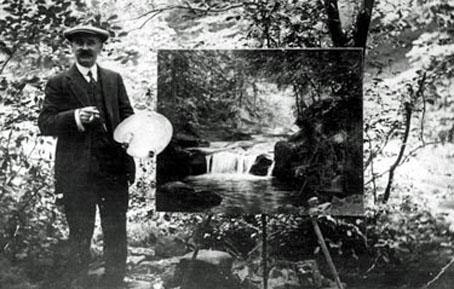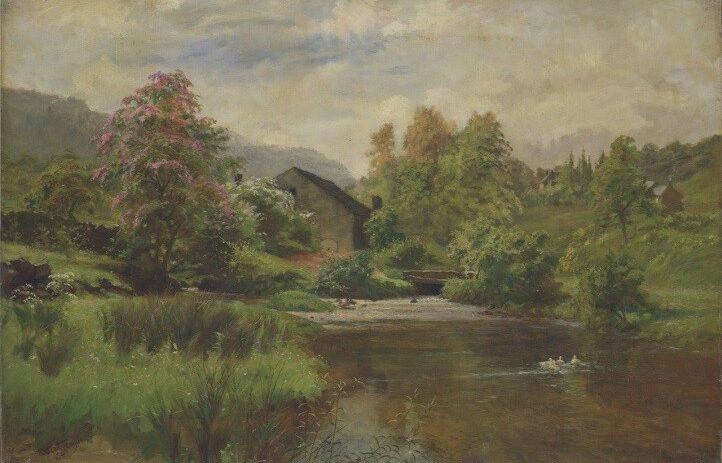
In 1921 Scott-Temple was in his 70s and a well-established artist who had travelled widely. He had paintings in a number of collections and is believed to have exhibited at the Scottish Royal Academy. Why he chose to settle in the Rivelin Valley remains a mystery, but he lived in a cottage at the Corn Mill, and undoubtedly became the inspirational mentor to a circle of younger painters, some of whom had only recently returned from the trenches of the First World War. This portrait is by one such local artist, W R E Goodrich. Scott Temple’s magnificent oil paintings capture the very essence of the wild and romantic Rivelin Valley, just at the moment when nature began to reclaim the industrial landscape.
This was a favourite subject for the Rivelin Valley Artists. It was still a working mill, grinding scythes, until the early 1930s, but the buildings have since disappeared. The site of the mill and its mill dam are immediately downstream of the Rivelin Glen road bridge and the Rivelin Glen cottages can be seen to the right of the picture.
This painting captures the spirit of the Rivelin Valley perfectly. The technical quality of the painting is extremely high, and it is not difficult to imagine the sound of the stream and the songs of the woodland birds. These aspects of the Rivelin landscape have remained unchanged for the past 100 years.
This natural feature is just a few yards downstream of the old packhorse bridge, and close to the site of the Rivelin corn mill. The large rock on the far bank is a favourite diving spot today, and do doubt is was back in the 1920s. This view is immediately recognisable from the painting and you can imagine the artists taking a dip on hot summer days.
It is the fast-flowing nature of the river Rivelin that provided the water power for 21 working mills in three miles. Much of the river was stone lined and controlled to fill the dams, drive the water-wheels and maximise the renewable energy, but there were still occasional stretches like this where the natural beauty of the river remained untamed. The wildflowers in the foreground are easily identified as pink campion, meadow buttercup, cow parsley and a dandelion clock. They are still common along the Rivelin’s river banks today.




